The Hybrid Office
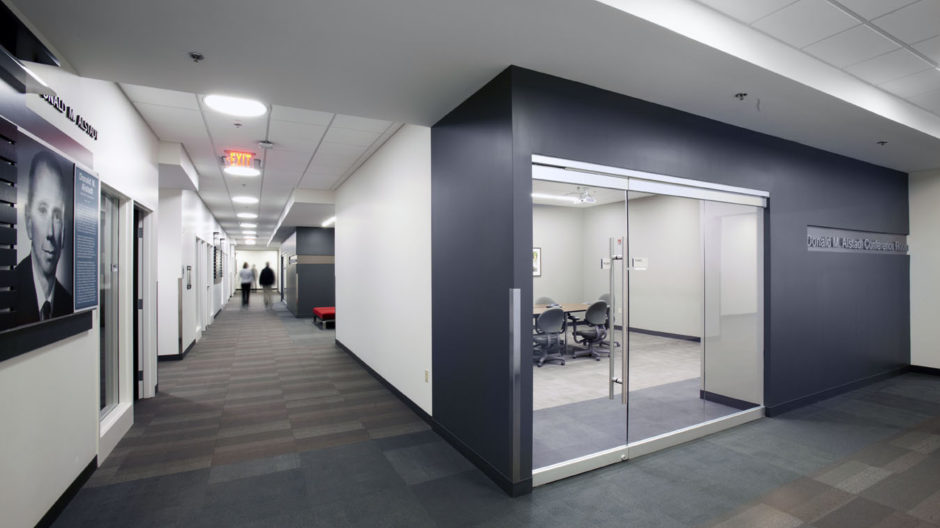
At its inception in the 1950’s, the open plan was a radical shift in office planning and seen as a way to encourage the open flow of ideas. In her recent article, “The Open-Office Trap,” Maria Konnikova cites that approximately 70 percent of offices now have an open floor plan and that its use has come to subvert the original intent. Konnikova references a June 1997 University of Calgary study of a Canadian oil company that transitioned from a traditional office space to an open plan. The psychologists monitored the employees’ satisfaction level with the new space and ultimately found that it was “disruptive, stressful, and cumbersome” and that “coworkers felt distant, dissatisfied, and resentful.”
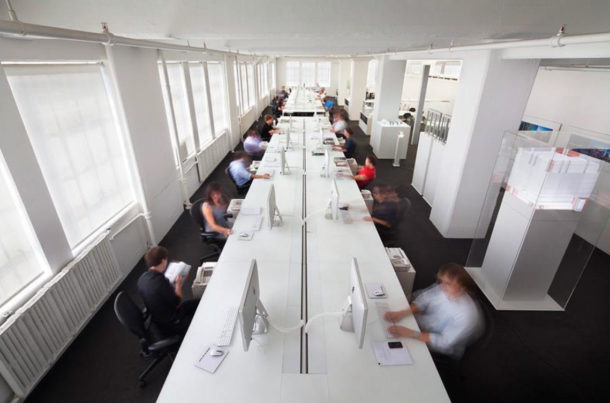
figure 1 | Thomas Phifer and Partners office space. An example of an open office plan.
In looking at the layout for the architectural office of Thomas Phifer and Partners (see right), the intended minimalist design aesthetic, which matches the architect’s work, hits us immediately and, while there is something to be said for the cleanliness of the space (computer cords are neatly tucked away, phones have been moved to a lower side table), it does not reflect the reality of how employees work (whether in an architecture firm or other type of office). Employees here are offered little privacy (either visual or acoustical).
The uniformity of the space (and color palette) works well for a photograph, but in the reality of the work environment it offers little relief to the employee and infuses a sense of inadequacy in the individual when contemplating their place. Their only contribution in the stark and open space is the color of their shirt. The individual is left with few opportunities for introspection with coworkers constantly in view.
Negative effects of an open office plan.
Some of the negative effects of an open office plan, such as visual and acoustical disturbances, are obvious, but what is surprising is how much those disruptions impact both the mental and physical state of the worker. Konnikova references another study by two psychologists in which workers were subjected to typical open-office noise for several hours. This resulted in a rise of adrenaline levels, increased physical strain, and a shying away from solving problems.
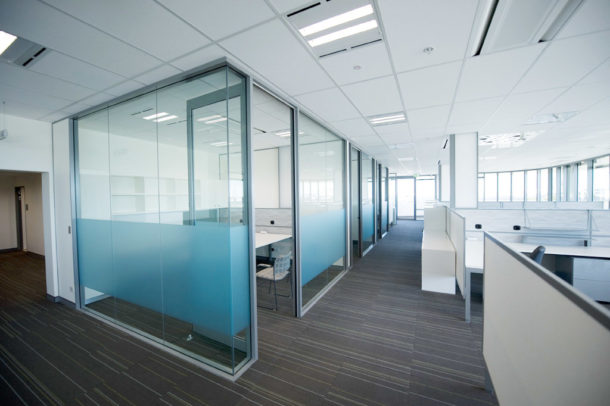
figure 2 | An example of a hybrid office plan.
To counter the trend of open offices, the solution might best be understood as being a hybrid between the open office plan and a traditional plan. The best solution is one that has transparency and finds the proper balance, which comes only from listening to the clients’ expectations and understanding their work model. Successful office planning is achieved by providing a layout that suits the company’s mode of operation while also offering employees alternatives.
Weber Murphy Fox’s plan for LORD Corporation’s Robison Road Facility in Erie, PA is one that finds this balance.
Workstations were placed at the perimeter of the floor plate to take advantage of daylighting while conference rooms and offices are pulled inward and designed with glass walls to allow for borrowing of natural light. Some conference rooms are located to visually connect to two-story volumes such as the lobby.
There is also a visual connection between the office space and the manufacturing portion of the building, a reminder of the company’s tangible products. Many of the circulation spaces along the edges of the workspace are not merely connecting corridors of uniform width, but those that allow for alcoves or “collision zones” where employees can meet and have impromptu conversations and spark ideas. In Evan Rawn’s recent article “When One Size Does Not Fit All: Rethinking the Open Office,” he references a 2013 workplace survey that concludes, “Across industries, we found that balanced workplaces — those prioritizing both focus and collaboration — score higher on measure of satisfaction, innovation, effectiveness, and performance.”
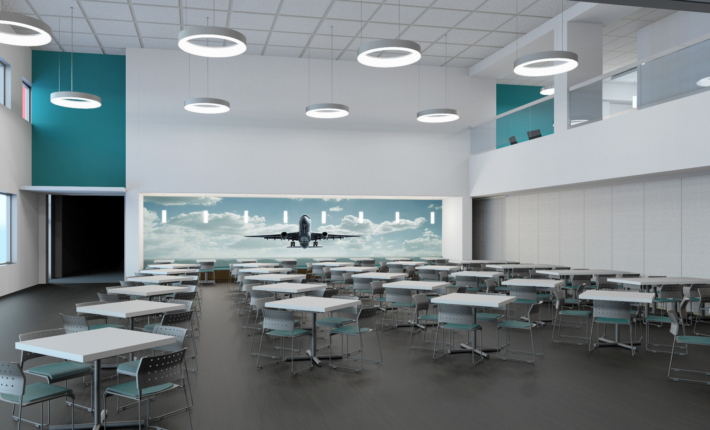
LORD Corp. dining facility. Note the visual connection to the second floor, reinforcing the dining area as one of the central communal spaces.
N2Y Corp. An example of a hybrid office plan. The workstations and layout afford employees privacy while also allowing for collaborative opportunities.
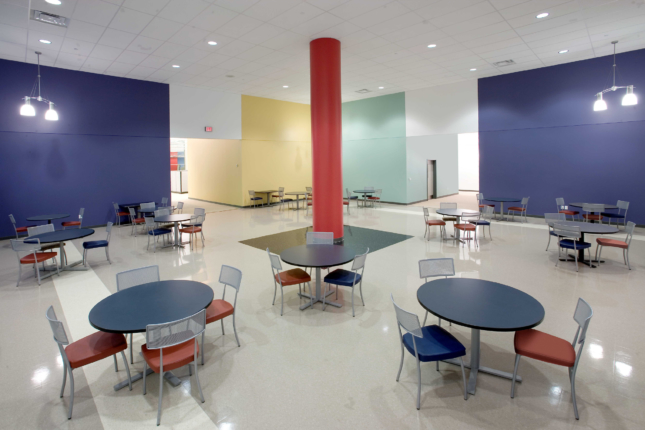
Agilysys Corp. common area allows for a variety of collaborative opportunities.
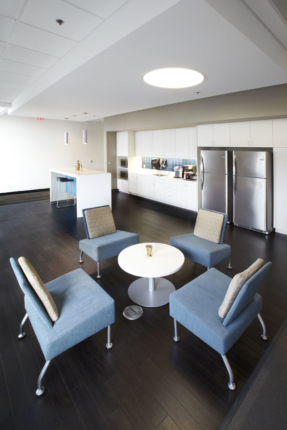
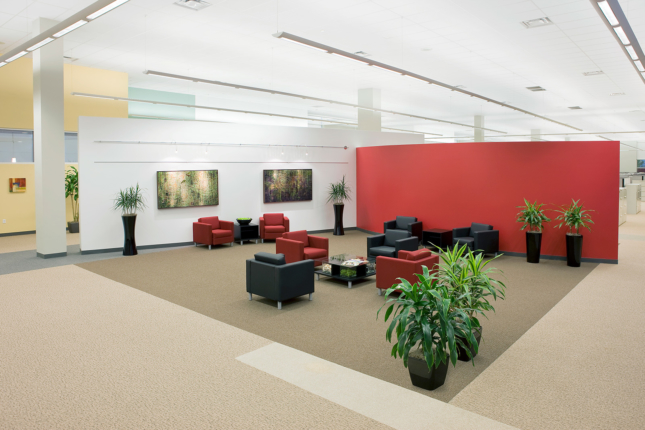
Agilysys Corp. casual conference area is an example of a hybrid space.
figure 3 (left to right) | LORD Corp. dining facility. Note the visual connection to the second floor, reinforcing the dining area as one of the central communal spaces. | N2Y Corp. An example of a hybrid office plan. The workstations and layout afford employees privacy while also allowing for collaborative opportunities. | Agilysys Corp. common area - allows for a variety of collaborative opportunities. | LORD Corp. breakroom - creates a “collision zone” through furniture configuration. | Agilysys Corp. casual conference area - an example of a hybrid space.
By providing alternative work areas these spaces enable employees to break away from their designated workstations, promoting a more active and healthier work environment, encouraging them to be less stagnant in their work routine and undertake tasks that might not require their computers such as brainstorming, collaborating, etc. “Hoteling stations” are those not permanently assigned, particularly useful for companies that host employees from other offices, outside consultants, or clients. Hoteling allows for productivity while away from home. Collaborative environments that utilize shared spaces such as “benching” areas, allow for workers to “drop-in.” Solutions come through careful assessment of the types of employees that will be using the spaces. Hybrid office layouts are those that create both “owned space” and “shared space.”
In countering the effects of the traditional office layout, the pendulum has swung too far towards the open office. Thoughtful planning accounts for the individual and individuals are never entirely one thing or another. Therefore, solving the problem of how to best design for the employee resides with a hybrid solution.
For additional information on The Hybrid Office please contact Sarah Solberg at 216.452.1203.
